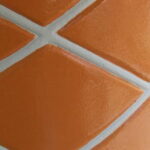Learning how to install vinyl plank flooring yourself can make this cost effective flooring product even more affordable. Unlike other floor systems, vinyl plank flooring is easy to install by even an amateur. This material is still a relatively new product, so consider the advantages and disadvantages of vinyl plank flooring carefully before buying.
Sub-floor Prep Work
Although vinyl plank flooring isn’t as unforgiving as vinyl floor tiles, plan on doing some prep work before beginning to insure that you have professional results.
Step #1: Remove any existing flooring. Sweep away any debris and clean the exposed wood or concrete.
Step #2: Remove the baseboards, labeling them on the back if you intend to reinstall them.
Step #3: Take a look at the subfloor. Fill in any indentations and sand away any bumps. It is important to make sure there are no hills or valleys in the floor as well.
Note: If you have a sub-floor in very poor condition, consider covering it. If it is a wood sub-floor, you may be able to simply apply plywood over the existing floor. For concrete, a skim coat can be used to repair the floor.
How to Install Vinyl Plank Flooring Professionally
Be sure to read any manufacturer instructions and recommendations before beginning. Ignoring these instructions could void your warranty, as well as create less than professional results.
Step #1: Start by squaring the floor. This is important, because rooms are seldom have walls that are perfectly parallel.
Step #2: Start installing the vinyl plank flooring by removing the backing strip. Then press it into place, with the corner lining up against your chalkline.
Step #3: Add another piece of the vinyl plank flooring by placing it parallel to the first installed piece. Stagger the ends: a two thirds adjacent, one third extension is common.
Step #4: Work your way to the edges of the room. Go slowly, avoiding gaps and taking time to measure to make sure the ends are properly staggered. A chalk line may help keep the staggering even.
Step #5: When you reach the edges of the room, you may find you will have to cut the vinyl plank flooring. With a metal straight edge or T-square as a cutting guide, score the back of the piece with a utility knife and break it. Small pieces can be used to finish adjacent rows.
Step #6: Find out if your vinyl plank flooring requires a flooring roller to fully bond the adhesive. If it does, one can be rented at a home improvement store for a small fee.
Final Considerations
Knowing how to install vinyl plank flooring does not mean that you have the patience to do it properly. Laying vinyl plank flooring requires careful and meticulous work for professional results. Call a contractor if you don’t have the time or inclination to complete this home improvement project.


